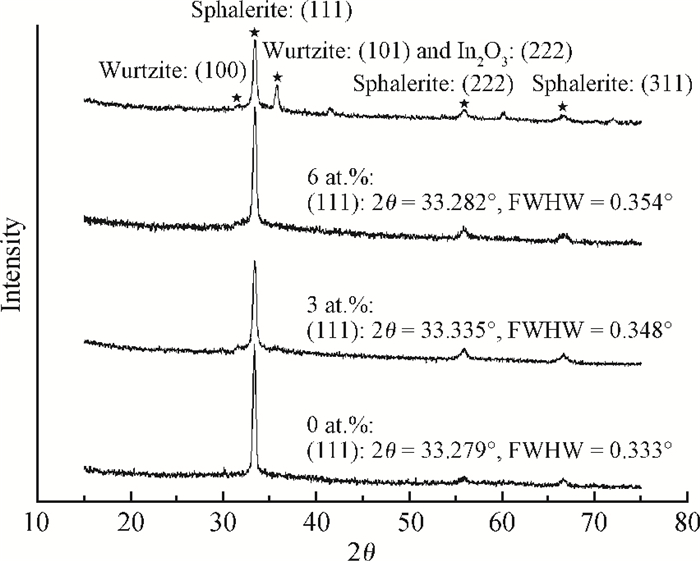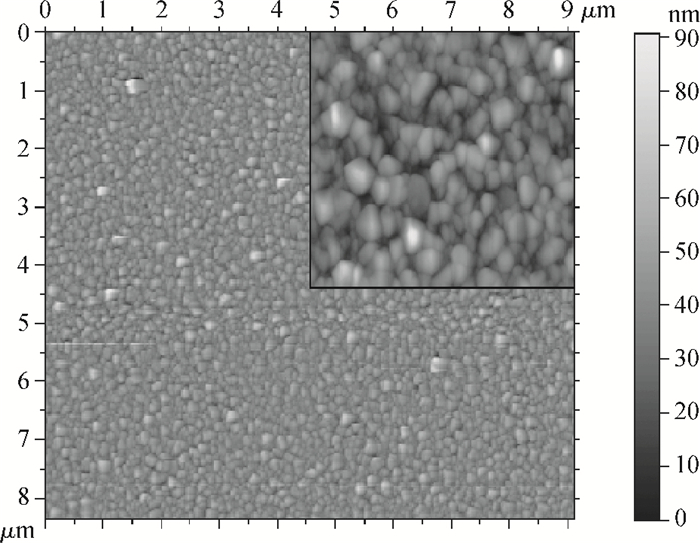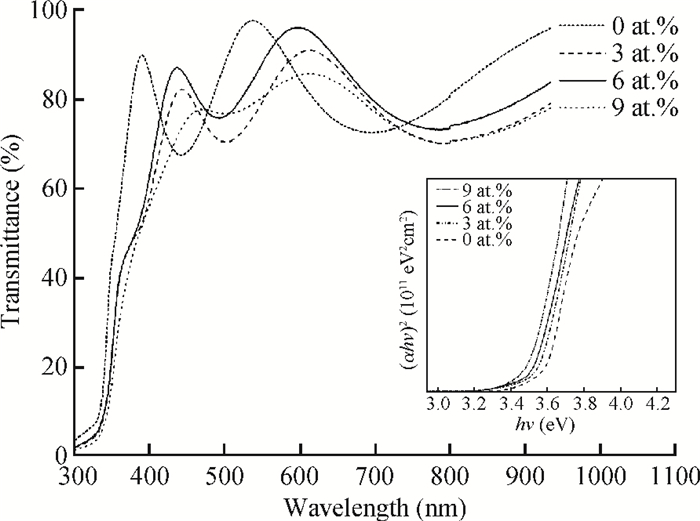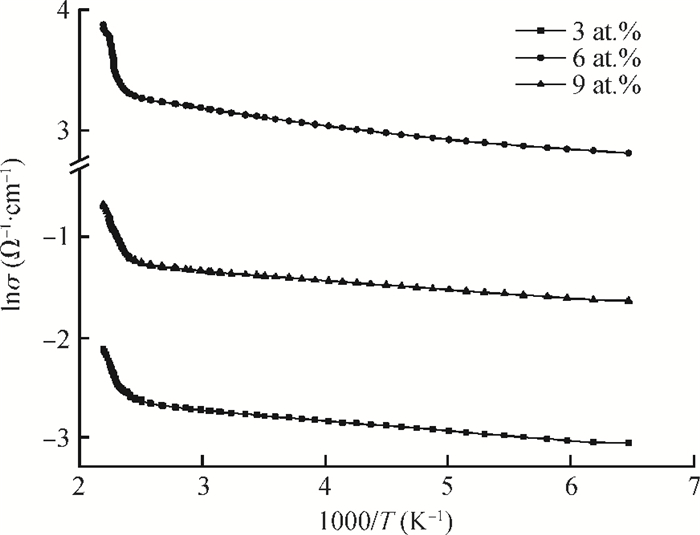| Citation: |
Jinhuo Chen, Wenjian Li. Significant improvement of ZnS film electrical and optical performance by indium incorporation[J]. Journal of Semiconductors, 2014, 35(9): 093003. doi: 10.1088/1674-4926/35/9/093003
****
J H Chen, W J Li. Significant improvement of ZnS film electrical and optical performance by indium incorporation[J]. J. Semicond., 2014, 35(9): 093003. doi: 10.1088/1674-4926/35/9/093003.
|
Significant improvement of ZnS film electrical and optical performance by indium incorporation
DOI: 10.1088/1674-4926/35/9/093003
More Information
-
Abstract
This paper reports a new material, indium-doped ZnS (ZnS:In) film, which is fabricated for the first time to improve its electrical and optical performance. By electron beam evaporation technology and the optimized annealing treatment, high quality ZnS:In film is prepared. XRD indicates that the incorporation of 6 at.% indium atoms into ZnS film causes little lattice deformation. The AFM results imply that large sized particles are compactly dispersed in the ZnS:In layer and results in an unsmooth surface. Electrical and optical property tests show that the resistivity of ZnS film is greatly decreased to 4.46×10-2 Ω·cm and the optical transmittance is improved to 85% in the visible region. Comparing with the results in other literatures, significant progress in electrical/optical performance has been made in this paper.-
Keywords:
- ZnS,
- indium incorporation,
- thin film,
- semiconductors
-
References
[1] Kasap S, Capper P. Springer handbook of electronic and photonic materials. Berlin:Springer, 2006[2] Hariskos D, Spiering S, Powalla M, et al. Buffer layers in Cu(In, Ga)Se2 solar cells and modules. Thin Solid Films, 2005, 480/481:99 http://ci.nii.ac.jp/naid/30006200708[3] Kreger F. The chemistry of imperfect crystals. Amsterdam:North-Holland, 1964[4] Contreras M A, Nakada T, Hongo M. ZnO/ZnS(O, OH)/Cu(In, Ga)Se2/Mo solar cell with 18.6% efficiency. Proceedings of 3rd World Conference on of Photovoltaic Energy Conversion, Osaka, Japan, 2003, 1:570 http://www.sciencedirect.com/science/article/pii/S0927024814000191[5] Nagamani, Revathi N, Prathapc P. Al-doped ZnS layers synthesized by solution growth method. Curr Aool Phys, 2012, 12:380 doi: 10.1016/j.cap.2011.07.031[6] Lott K, Nirk T, Shinkarenko S. High temperature electrical conductivity in ZnS:Al and in CdSe:Al. Solid State Ionics, 2004, 173:83 doi: 10.1016/j.ssi.2004.07.056[7] Prathap P, Revath N, Subbaiah Y P V. Preparation and characterization of transparent conducting ZnS:Al films. Solid State Sci, 2009, 11:224 doi: 10.1016/j.solidstatesciences.2008.04.020[8] Brus V V, Kovalyuk Z D, Maryanchuk P D. Optical properties of TiO-MnO thin films prepared by electron-beam evaporation. Tech Phys, 2012, 57:1148 doi: 10.1134/S1063784212080063[9] Cullity B D, Stock S R. Elements of X-ray diffraction. 3rd ed. New Jersey:Prentice Hall, 2001[10] Zhang R, Wang B, Wei L. Sulfidation growth and characterization of nanocrystalline ZnS thin films. Vacuum, 2008, 82:1208 doi: 10.1016/j.vacuum.2008.02.003 -
Proportional views






 DownLoad:
DownLoad:

















